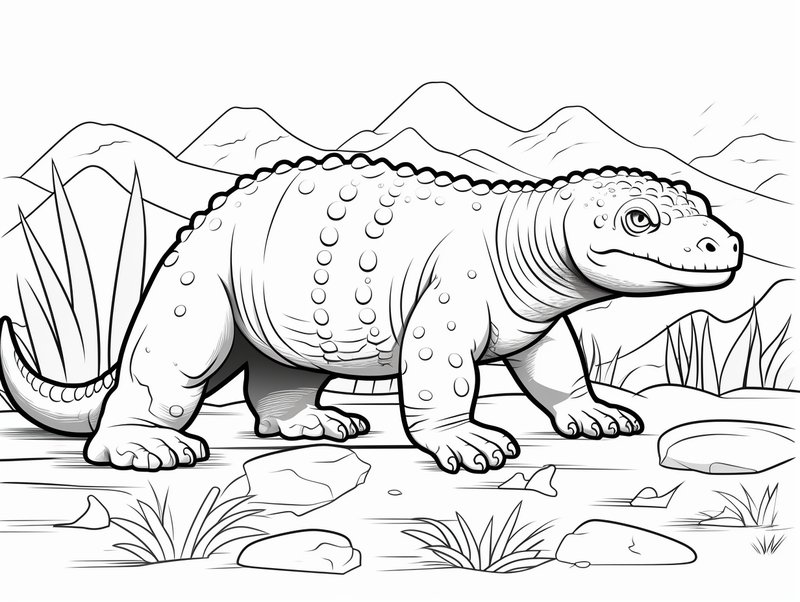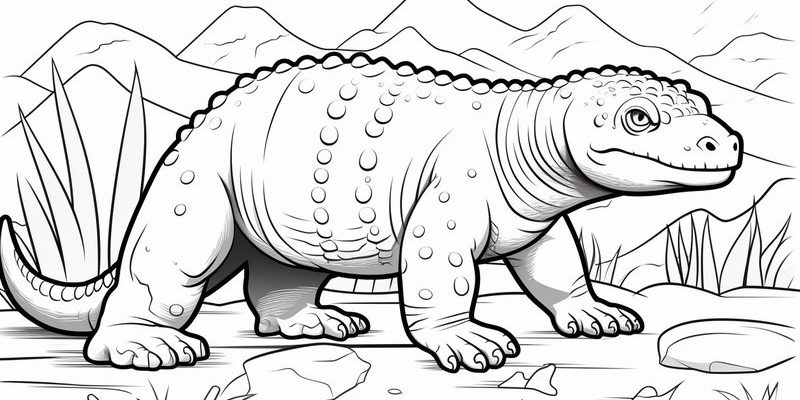
Now, why should you care about identifying a Gila monster? Aside from their stunning appearance, these reptiles play an important role in their ecosystem. Understanding how to recognize them can not only enhance your outdoor adventures but also help promote conservation efforts. So, grab a cup of coffee, and let’s explore how to identify a Gila monster in the wild!
What Is a Gila Monster?
The Gila monster is one of the few venomous lizards in the world, found mainly in the deserts of the southwestern United States and parts of Mexico. They’re heavy-bodied and can grow up to 2 feet long. These reptiles have a chunky appearance, with thick tails that store fat, allowing them to survive in arid conditions.
You might be wondering where the name “Gila” comes from. It’s derived from the Gila River in Arizona, where these lizards are commonly found. Their skin is covered in bead-like scales, giving them a distinctive texture. But it’s their striking coloration—primarily black with vibrant orange or pink patches—that really makes them stand out against the sandy desert backdrop.
Habitat and Range
Gila monsters thrive in desert environments, which might seem harsh, but it’s their perfect playground. They typically inhabit rocky hillsides, sandy plains, and dry scrub areas. If you’re out hiking in the Sonoran or Mojave Desert, keep an eye out for these reptiles sunbathing on a warm rock or burrowed in the sand.
Their range extends across several states, including Arizona, California, Nevada, and New Mexico. They also inhabit parts of Mexico. If you ever find yourself in these areas, knowing their habitat can help you spot one more easily.
Physical Characteristics
Identifying a Gila monster comes down to a few key physical traits. As mentioned earlier, they have a chunky body with a stout tail. Their skin is smooth yet scaly, often displaying striking colors. The pattern can vary between individuals, but the typical black and orange combo is a dead giveaway.
When you see one of these lizards, take note of their distinctive head shape—it’s broad and triangular. They also have short legs with clawed toes, which help them dig into the ground. Their eyes are particularly interesting, with a rounded shape and a distinctive eyelid that can make them look quite expressive.
Behavior and Movement
Gila monsters are generally slow movers, preferring to take their time as they navigate the terrain. You won’t see them sprinting away like a common lizard; instead, they might take a leisurely stroll or rest in the sun for hours. This laid-back lifestyle is part of what makes them so fascinating.
They’re primarily active in the early morning or late afternoon, especially during warmer months. If you’re out exploring, look for them during these times, as they’ll be more likely to emerge for a bit of sunbathing. Just remember to keep your distance—they may be slow, but they can be defensive if threatened.
How to Spot a Gila Monster
Here’s where the fun starts. To spot a Gila monster, you’ll want to look in areas where they like to hang out. Start by searching rocky outcrops, sandy washes, or brushy areas. Look closely at the ground and around large boulders, where they might be sunning themselves or hiding from the heat.
While you’re out there, listen for any rustling sounds. Gila monsters are not particularly quiet, and if you hear something moving nearby, take a moment to investigate. Remember, they’re more active during the mornings and evenings, so plan your hikes around these times for a better chance of catching a glimpse.
Safety and Conservation
While it might be tempting to get up close and personal with these colorful creatures, it’s essential to keep your distance. Gila monsters are venomous, and while their bites are rarely fatal to humans, they can cause significant pain and medical issues. Respect their space and observe them from a safe distance.
Conservation is crucial for the Gila monster, as their habitat is threatened by urban development and climate change. By learning to identify and appreciate these lizards, you can contribute to their protection. Always follow local guidelines when hiking and consider supporting organizations that work to preserve their natural habitats.
Identifying a Gila monster in the wild can be a thrilling, memorable experience. By understanding their habitat, physical features, and behaviors, you can increase your chances of spotting them during your adventures. Plus, knowing more about these incredible reptiles can inspire you to appreciate the unique ecosystems they inhabit.
So, the next time you’re trekking through the deserts of the Southwest, keep your eyes peeled for that vibrant flash of color. Whether you catch a glimpse of a sunbathing Gila monster or not, you’ll walk away with a newfound respect for these extraordinary creatures and the natural world they inhabit.

